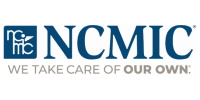Dec
10
Thankfully, many chiropractors are inexperienced in dealing with chiropractic debt collection agencies because a large number have cash practices and keep costs affordable so that their patients are able to pay on time. At the same time, however, ignorance is not bliss when you discover that several patients are falling behind on their payments. If this happens to you, follow these tips to ensure that your experience is positive and financially advantageous!
Keeping an eye out for red flags
Although, in a perfect world, all chiropractic debt collection agencies are regulated, you still want to make sure that you’re dealing with a reputable agency. Do your research online and make sure that they are the type of debt collection agency that you want representing you and your practice.
IC System Quick Facts
Keeping an eye out for red flags
Although, in a perfect world, all chiropractic debt collection agencies are regulated, you still want to make sure that you’re dealing with a reputable agency. Do your research online and make sure that they are the type of debt collection agency that you want representing you and your practice.
- Certifications –Your chiro debt collection agency should require that their collectors be certified, for example, through industry trade groups such as ACA International – the Association of Credit and Collection Professionals. This ensures you’re going to partner with an agency that has a vested interest in finding and training high-quality collectors.
- Compliance – Make sure that the collection agency is fully compliant with the Fair Debt Collections Practices Act (FDCPA) and is licensed in all states where your patients live and where you run your practice.
- Data Security – Every reputable chiropractic debt collection agency will have emergency backup systems in place and will maintain strict privacy measures so that your data is not only secure, but will be used for business related purposes only.
- 24/7 Online Access – This is more of a convenience than a hard, fast rule. Being able to submit and access the status of your files at any time of the day is a standard in today’s Internet economy and will weed out the companies whose systems may be outdated.
Questions to ask when interviewing agencies
When seeking out your debt collection agency make sure to ask these types of questions: How many chiropractic clients do you have?
In essence, chiropractic debt management is a type of “niche” market because collections are relatively uncommon compared to the massive delinquencies accrued in the medical community. Collection agencies need to understand that your business model may be quite different than other independent practitioners. Therefore, it is imperative that they are sensitive to the specific needs of chiropractors and do not approach debt management in the same exact manner that they tackle their other clients’ debt portfolios.
What type of recovery plans do you offer?
Some agencies will charge a flat fee or rate for a certain number of accounts that they manage over a pre-determined time period. This will give you the flexibility to use their services as you need, and generally you will receive 100 percent of the money that they collect.
Do you use skip tracing?
According to LexisNexis, “Research has shown that as many as 35 percent of delinquent debtors move each year and 50 percent of all accounts received for collections require some form of skip tracing.” Instead of banging their heads against the wall and wasting time sending countless letters to unoccupied addresses, skip tracing helps debt collectors locate debtors by monitoring their credit history, cell phone usage, and employer location in an effort to track down someone who may be avoiding their financial obligations.
Am I able to personalize your approach?
Remember, the manner in which your chiropractic debt collection agency collects your debts directly reflects upon your personal character and how you run your private practice. You don’t want a company to mistreat and/or upset your patients. Make sure that you have a strong voice in the way that the collection agency approaches communicating with your patients, so that their methods are congruent with your business model.
How many credit bureaus do you report to?
When things get beyond their ability to control, your collection agency needs to use every resource available to collect your patients’ delinquencies. Make sure that they report to all four major credit bureaus to hold your patients fully accountable for their fiscal obligations.
In summary, utilizing receivables management resources are vital to ensure that your chiropractic debt collections do not get out of hand. Following the guidelines above will help ensure that you will make a wise choice in an agency and, subsequently, will receive the best possible benefit from your investment.
When seeking out your debt collection agency make sure to ask these types of questions: How many chiropractic clients do you have?
In essence, chiropractic debt management is a type of “niche” market because collections are relatively uncommon compared to the massive delinquencies accrued in the medical community. Collection agencies need to understand that your business model may be quite different than other independent practitioners. Therefore, it is imperative that they are sensitive to the specific needs of chiropractors and do not approach debt management in the same exact manner that they tackle their other clients’ debt portfolios.
What type of recovery plans do you offer?
Some agencies will charge a flat fee or rate for a certain number of accounts that they manage over a pre-determined time period. This will give you the flexibility to use their services as you need, and generally you will receive 100 percent of the money that they collect.
Do you use skip tracing?
According to LexisNexis, “Research has shown that as many as 35 percent of delinquent debtors move each year and 50 percent of all accounts received for collections require some form of skip tracing.” Instead of banging their heads against the wall and wasting time sending countless letters to unoccupied addresses, skip tracing helps debt collectors locate debtors by monitoring their credit history, cell phone usage, and employer location in an effort to track down someone who may be avoiding their financial obligations.
Am I able to personalize your approach?
Remember, the manner in which your chiropractic debt collection agency collects your debts directly reflects upon your personal character and how you run your private practice. You don’t want a company to mistreat and/or upset your patients. Make sure that you have a strong voice in the way that the collection agency approaches communicating with your patients, so that their methods are congruent with your business model.
How many credit bureaus do you report to?
When things get beyond their ability to control, your collection agency needs to use every resource available to collect your patients’ delinquencies. Make sure that they report to all four major credit bureaus to hold your patients fully accountable for their fiscal obligations.
In summary, utilizing receivables management resources are vital to ensure that your chiropractic debt collections do not get out of hand. Following the guidelines above will help ensure that you will make a wise choice in an agency and, subsequently, will receive the best possible benefit from your investment.
IC System Quick Facts
- For more than 40 years, Chiro Collect, Powered by I.C. System, has worked with hundreds of Chiropractic Practices nationwide, collecting millions of dollars on their behalf. I.C. System is a BBB Accredited Business with an A+ Rating.
- We are among just a few dozen agencies worldwide to be ”certified” for Best Practices through ACA International, The Association of Credit and Collection Professionals, Professional Practices Management System (PPMS) program.
- We leverage comprehensive skip-tracing efforts to find “missing” patients.
- We offer Chiropractor Clients Online Tools to easily submit debts, view our work effort (number of letters mailed, number of calls made, etc.) on debts, report payments, and generate reports.
Source




